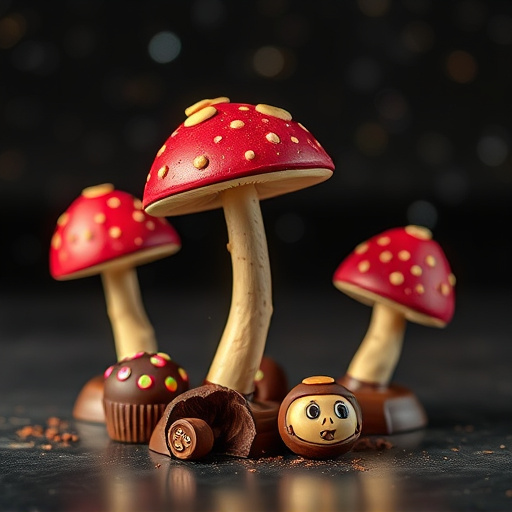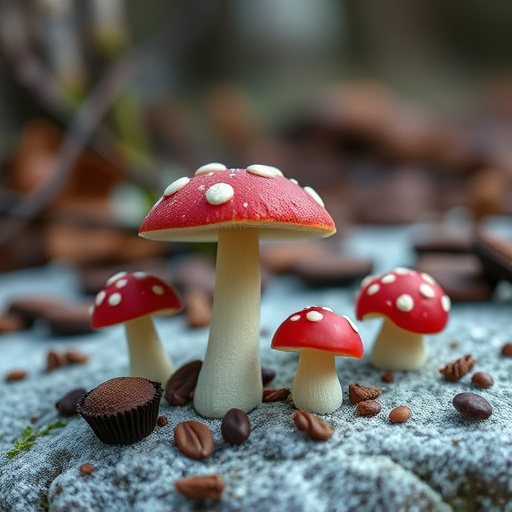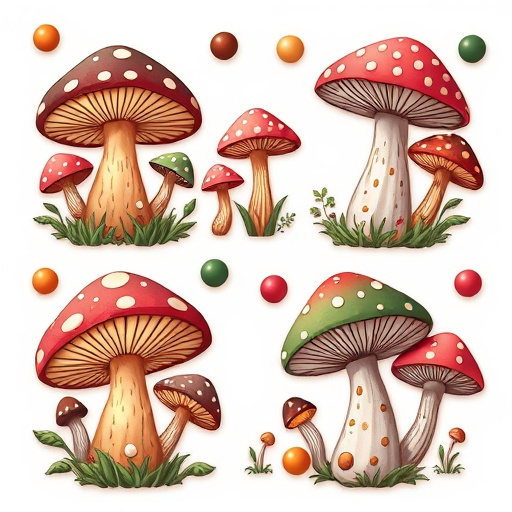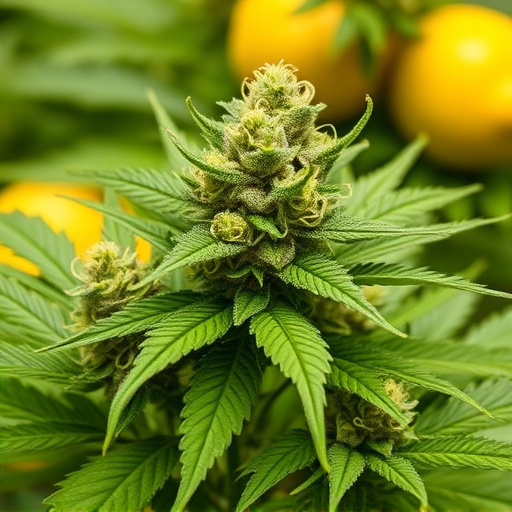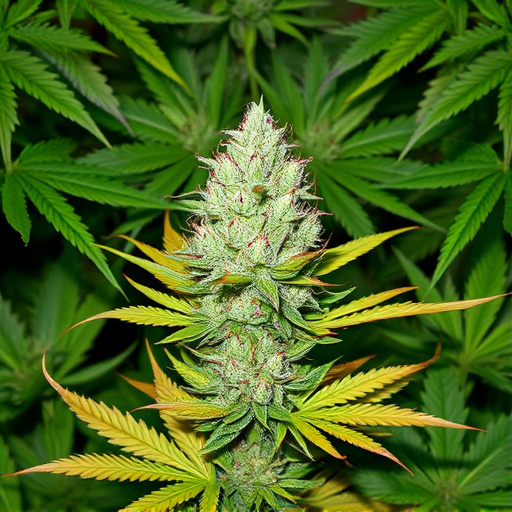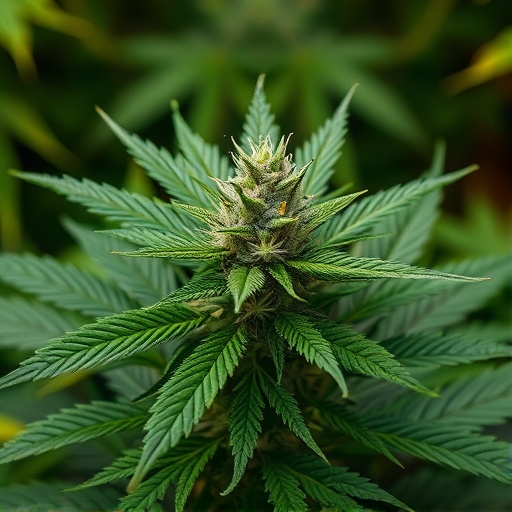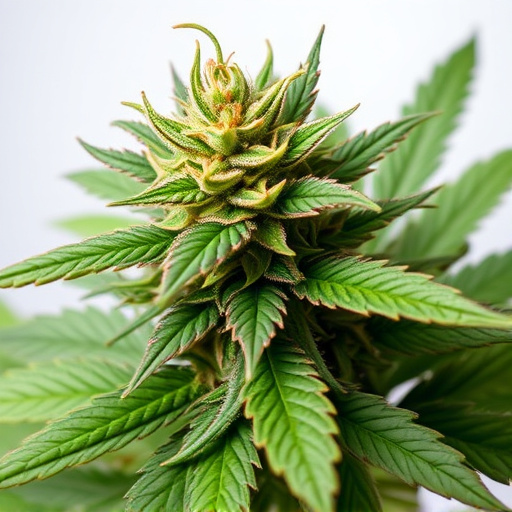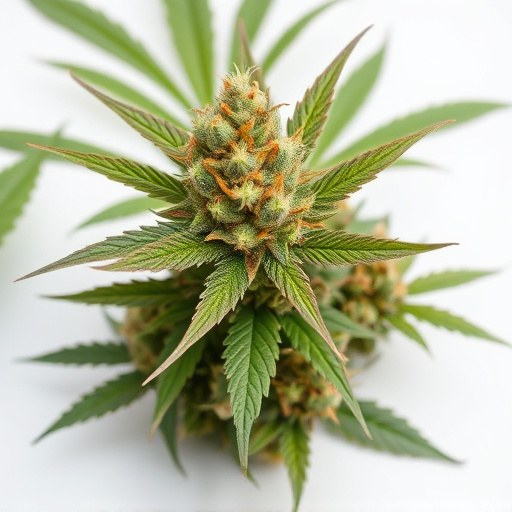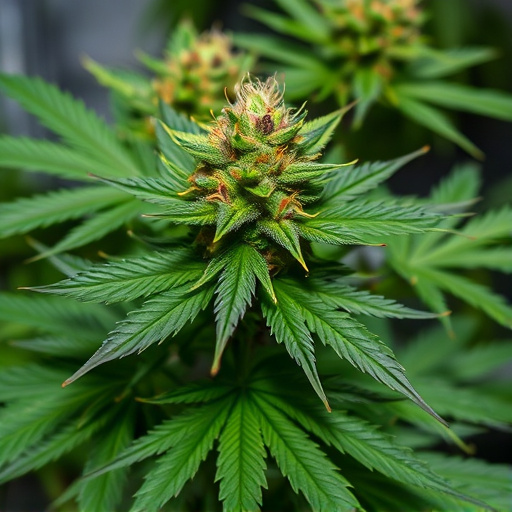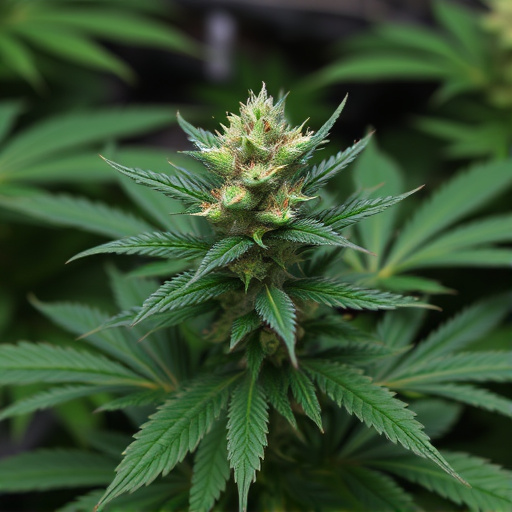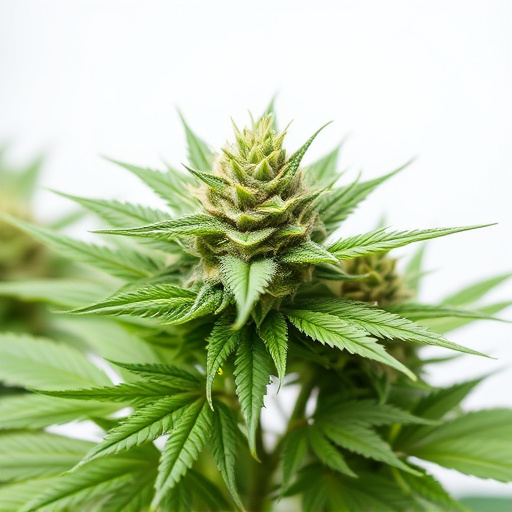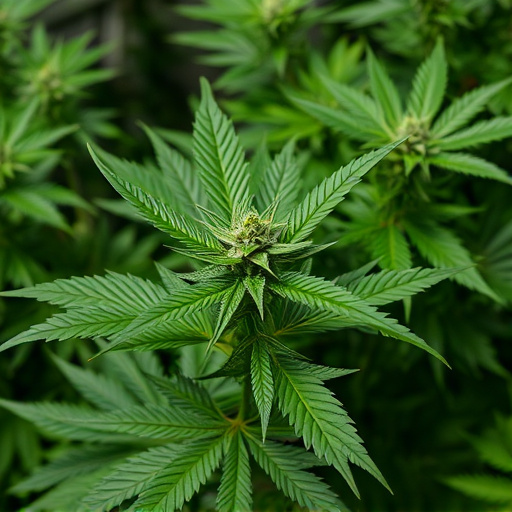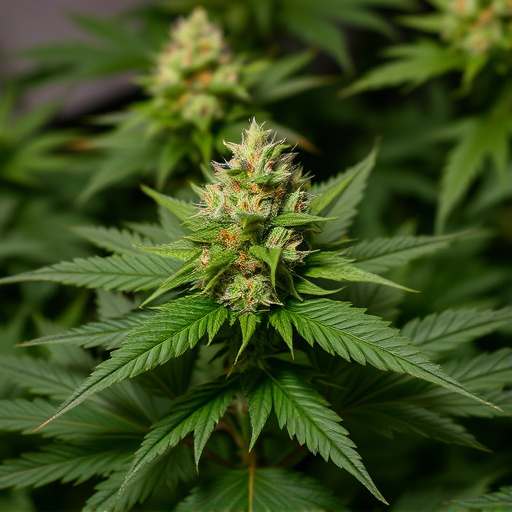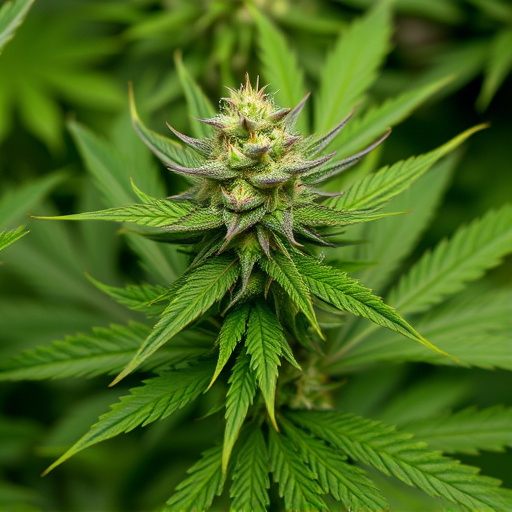Genetics and environmental factors, notably herbicide exposure, significantly shape the color diversity observed in medical marihuana strains. Each plant's unique genetic makeup determines its pigments, similar to human physical traits. Cannabinoid production, influenced by mutations and environmental cues like temperature and sunlight, results in a spectrum of colors – from purple to red and blue – that indicate distinct chemical compositions with potential therapeutic benefits. Understanding these genetic and environmental interactions allows cultivators to selectively breed plants, maximizing the medicinal properties of specific strains.
“Unveiling the Mystical Auras: Exploring the Causes of Purple, Red, and Blue Weed
Weed enthusiasts often marvel at the rare sight of purple, red, and blue hues in medical marijuana strains. This intriguing phenomenon goes beyond aesthetics; it delves into the complex interplay of genetics, environmental factors, and chemical compounds. In this article, we embark on a journey to uncover the root causes behind these vibrant colors, from the genetic code of cannabis to cultivation techniques, offering insights that every curious patient and cultivator should know.”
- Genetics and Herbicide Exposure: The Root Causes of Color Variation
- – Exploring the genetic basis for purple, red, and blue hues in cannabis
- – How environmental factors like herbicides contribute to color changes
Genetics and Herbicide Exposure: The Root Causes of Color Variation
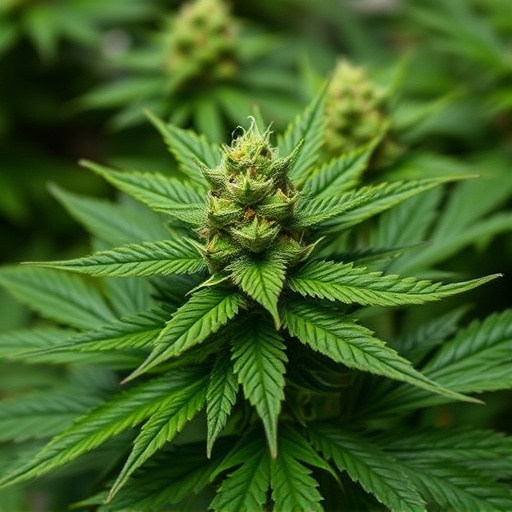
Genetics and herbicide exposure play a significant role in the color variation seen across different types of weed, including the purple, red, and blue hues often associated with medical marihuana strains. Each plant’s unique genetic makeup dictates its specific pigments and color expression, much like how human beings exhibit diverse physical traits due to their individual genetic codes.
Herbicides, on the other hand, can trigger color changes in plants. When a weed strain is exposed to certain herbicides, it may develop unusual colors as a response mechanism. This phenomenon occurs because herbicides can disrupt the plant’s natural pigmentation processes, leading to variations in the production of chlorophyll and other pigments that contribute to the plant’s final coloration.
– Exploring the genetic basis for purple, red, and blue hues in cannabis
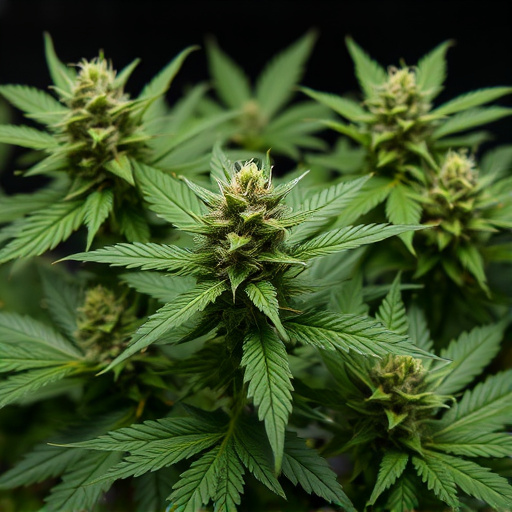
The genetic basis behind the vibrant purple, red, and blue hues in cannabis plants is a fascinating aspect for both scientists and enthusiasts alike. These striking colors are not merely cosmetic; they often indicate unique chemical compositions and potential therapeutic benefits within specific medical marihuana strains. The pigments responsible for these colors are part of a larger group of compounds known as anthocyanins, which are produced by the plant in response to environmental stimuli like light intensity and temperature.
In cannabis, various genetic mutations and interactions between different genes can lead to the expression of anthocyanin pigments in different parts of the plant, resulting in a spectrum of colors. These variations not only create visually striking appearances but also suggest diverse chemical profiles that may offer distinct therapeutic effects. Understanding these genetic mechanisms allows cultivators to selectively breed plants with desired traits, enhancing the potential benefits for medical marihuana applications.
– How environmental factors like herbicides contribute to color changes
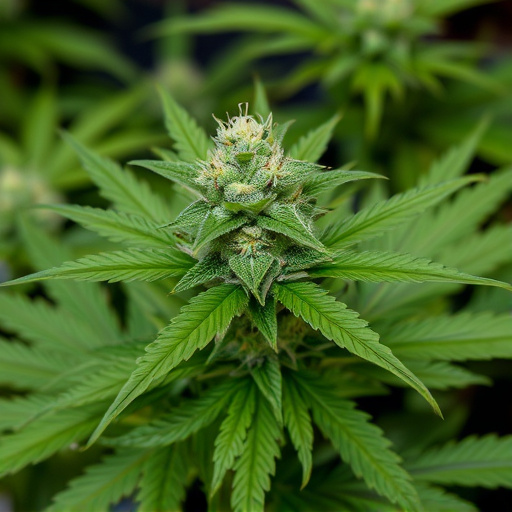
Environmental factors play a significant role in the color variations observed in medical marijuana strains, including the development of purple, red, and blue hues. One key contributor is herbicide exposure. These chemicals, often used to control weeds in agricultural settings, can indirectly affect cannabis plants’ pigmentation when applied nearby or through contaminated soil. Herbicides can cause stress to the plants, triggering a range of physiological responses, one of which is the production of anthocyanins—pigments responsible for colors like purple and red.
Additionally, environmental stressors such as temperature fluctuations, sunlight exposure, and nutrient deficiencies can also contribute to these color changes. For instance, cooler temperatures can stimulate the production of anthocyanins in response to increased UV light exposure, resulting in richer reds and purples. Such variations not only make each strain unique but also offer insights into their potential therapeutic benefits, as specific colors have been linked to different medicinal properties in medical marihuana strains.
The vibrant colors of purple, red, and blue in medical marihuana strains are more than just aesthetic; they’re a result of complex genetic interactions and environmental influences. Understanding these factors helps cultivate a diverse range of desirable traits in cannabis plants. By recognizing the interplay between genetics and herbicide exposure, cultivators can create unique and potent medical marihuana strains that cater to various patient needs.
